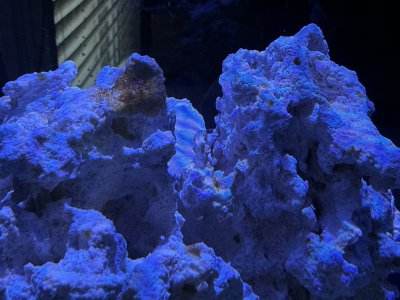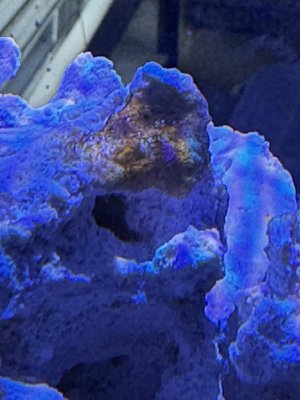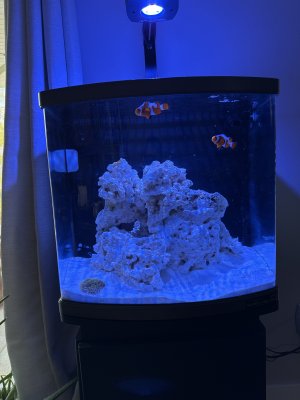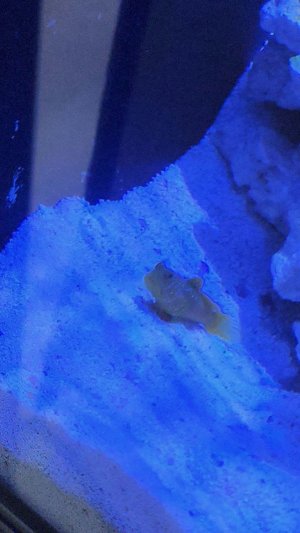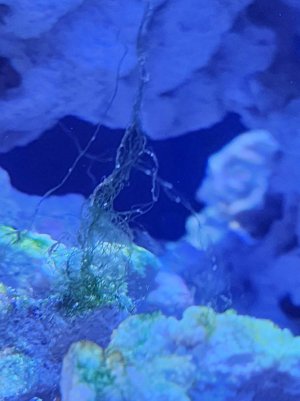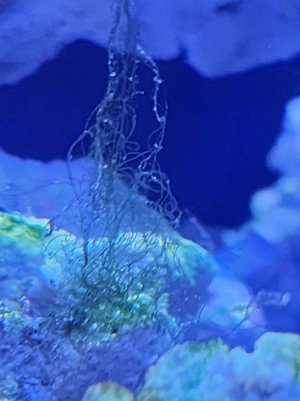I'll preface this by saying, I'm no expert in dealing with diatoms or dinos.
Can you get a close up (preferably under white light) of the hair algae? I want to make sure it's not Bryopsis.
The dusting on the sand could be either diatoms or cyano based on the pics. The first and second pics make me think diatoms but the third pic makes me think cyano. Could be both.
A while back, I had the worst cyano issue I've had in 40+ years of reef keeping. Admittedly, I only test when something doesn't look right. I was literally trying everything and finally figured out my cyano issue was actually an imbalance in NO3 and PO4. I had absolutely ZERO PO4 and NO3 was around 10. The cyano was able to thrive because it can utilize just nitrate, just phosphate or both and other algae need both to thrive. In my case, there wasn't enough phosphate for other algae to compete with the cyano. But, that's obviously not this issue in your tank as both nitrate and phosphate are high. In the end, I removed the GFO from my media reactor and increased water changes and feeding and poof, my cyano issue went away. Here's the
thread about it if you're interested.
So, your Nitrate and Phosphate are a bit high and your Alkalinity and pH are a little low.
If you bring the nitrate and phosphate down and keep them in balance, the algae (as long as the hair algae isn't Bryopsis) will be easier to keep in check. You can do that through water changes and you might want to consider running some GFO to bring the phosphate down.
Do you know what your calcium levels are? High calcium levels can lead to a lower alkalinity and vice versa. Low alk contributes to a low pH. To increase alk you can either start dosing an alkalinity supplement and/or dripping kalkwasser (I use Mrs. Wages Pickling Lime from Menards).
Another thing to consider with Alk and Ca, is mix up a fresh batch of saltwater and test that. I had an issue a while back with two batches of bad salt. Both batches (same brand but different batch numbers) had super high calcium and super low alkalinity. This was leading to the inability to increase/maintain alkalinity in the tank and, thus, a suppressed pH.
For the pH another thing you can do (assuming your running a skimmer) is to run your airline outside to introduce fresh air. In today's homes, they're generally sealed pretty good and therefore there's a build up of CO2 in the house that leads to a lower pH. Introducing fresh air into the system can help increase pH. BUT, make sure there is no was for pesticides or other chemicals to get into the airline tubing you run outside.
Here are the parameters you want to shoot for:
View attachment 32405998
All that said, take things slow and try to address one issue at a time. I've said it a million times over the years, nothing good happens fast in this hobby. Focus on one thing at a time. In your case, IMO, I would focus on getting the nitrate and phosphate down to acceptable levels. Once those are in check, let's work on your alkalinity and pH.

